Themed collection Photodissociation and reaction dynamics

Photodissociation and reaction dynamics
This themed issue includes a collection of articles on photodissociation and reaction dynamics and marks the occasion of Professor Mike Ashfold's 65th birthday.

Phys. Chem. Chem. Phys., 2019,21, 13878-13879
https://doi.org/10.1039/C9CP90164G
Photoinduced C–H bond fission in prototypical organic molecules and radicals
We survey and assess current knowledge regarding the primary photochemistry of hydrocarbon molecules and radicals.
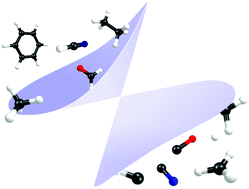
Phys. Chem. Chem. Phys., 2019,21, 13880-13901
https://doi.org/10.1039/C8CP07454B
Probing ultrafast dynamics during and after passing through conical intersections
Time-resolved photoelectron spectroscopy using vacuum-UV probe pulses enables observing ultrafast dynamics during and after passing through conical intersections.
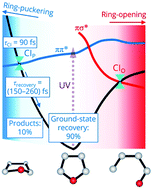
Phys. Chem. Chem. Phys., 2019,21, 13902-13905
https://doi.org/10.1039/C8CP04426K
Energetics and ionization dynamics of two diarylketone molecules: benzophenone and fluorenone
This paper reports on the single photon ionization of benzophenone and fluorenone and the subsequent complex dynamics fragmentation of the benzophenone cation. It shows pre-ionizing fragmentation in the case of benzophenone.
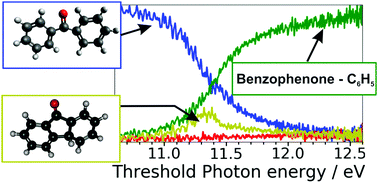
Phys. Chem. Chem. Phys., 2019,21, 14453-14464
https://doi.org/10.1039/C9CP02385B
Energy- and conformer-dependent excited-state relaxation of an E/Z photoswitchable thienyl-ethene
Ultrafast spectroscopy reveals how conformers and complex photophysical relaxation cascades determine the cis-to-trans photoswitching efficiency of bis(bithienyl)-dicyanoethene (4TCE).
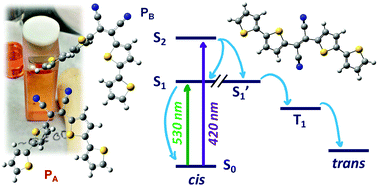
Phys. Chem. Chem. Phys., 2019,21, 14440-14452
https://doi.org/10.1039/C9CP01226E
Field modified spin–orbit potential curves of IBr. Preliminary dynamical results
We revisit the seminal work on the control of IBr photodissociation using a strong non-resonant IR pulse, calculating the full 36-state manifold of spin–orbit coupled states. Preliminary results on the eld-driven IBr dissociation dynamics are presented.
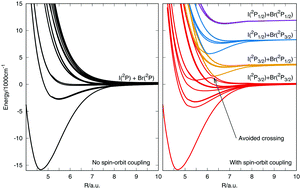
Phys. Chem. Chem. Phys., 2019,21, 14429-14439
https://doi.org/10.1039/C8CP07248E
New insights into the dissociation dynamics of methylated anilines
Combined time-resolved photoelectron spectroscopy and photofragment imaging supports a possible valence-to-Rydberg decay mechanism in methylated anilines.

Phys. Chem. Chem. Phys., 2019,21, 14394-14406
https://doi.org/10.1039/C8CP07061J
Exploring ultraviolet photoinduced charge-transfer dynamics in a model dinucleotide of guanine and thymine
We unequivocally demonstrate that the Franck–Condon excited states of 2′-deoxyguanosine 3′-monophospate 5′-thymidine are significantly delocalised across both nucleobases, and mediate ultrafast exciplex product formation.

Phys. Chem. Chem. Phys., 2019,21, 14407-14417
https://doi.org/10.1039/C8CP07864E
Competition between folded and extended structures of alanylalanine (Ala-Ala) in a molecular beam
Structural analysis of the neutral dipeptide Ala-Ala by action spectroscopy using IRMPD-VUV spectroscopy reveals predominance of extended structure.
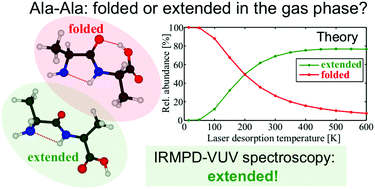
Phys. Chem. Chem. Phys., 2019,21, 14126-14132
https://doi.org/10.1039/C9CP00140A
Mode-specific excited-state dynamics of N-methylpyrrole
A picosecond time-resolved dynamics study unravels the photo-physical properties of N-methylpyrrole in excited-states in a mode-specific way.

Phys. Chem. Chem. Phys., 2019,21, 14387-14393
https://doi.org/10.1039/C9CP00113A
Exploring Norrish type I and type II reactions: an ab initio mechanistic study highlighting singlet-state mediated chemistry
Norrish reactions are important photo-induced reactions in mainstream organic chemistry and are implicated in many industrially and biologically relevant processes and in the processing of carbonyl molecules in the atmosphere.

Phys. Chem. Chem. Phys., 2019,21, 14418-14428
https://doi.org/10.1039/C8CP07292B
Ultrafast electronic relaxations from the S3 state of pyrene
The ultrafast relaxation occurring in pyrene upon excitation at 4.68 eV was studied in a supersonic gas-jet fs pump–probe experiment.

Phys. Chem. Chem. Phys., 2019,21, 14111-14125
https://doi.org/10.1039/C8CP06895J
The role of symmetric functionalisation on photoisomerisation of a UV commercial chemical filter
Photoisomerisation has been shown to be an efficient excited-state relaxation mechanism for a variety of nature-based and artificial-based molecular systems.

Phys. Chem. Chem. Phys., 2019,21, 14350-14356
https://doi.org/10.1039/C8CP06536E
The effect of CO rotation from shaped pulse polarization on reactions that form C2
The effect of CO rotational energy on bimolecular reactions to form electronically excited C2 is reported here.
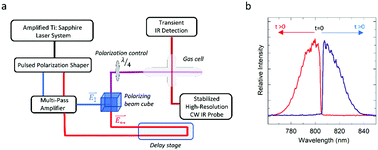
Phys. Chem. Chem. Phys., 2019,21, 14103-14110
https://doi.org/10.1039/C8CP06917D
Rotational dependence of the branching ratios and fragment angular distributions for the photodissociation of 12C16O in the Rydberg 4p(2) and 5p(0) complex region (92.84–93.37 nm)
Various patterns of rotational dependence for the photodissociation branching ratios and irregular angular distributions of the photofragments have been observed.
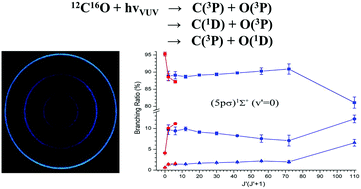
Phys. Chem. Chem. Phys., 2019,21, 14376-14386
https://doi.org/10.1039/C8CP07620K
Ultrafast and radiationless electronic excited state decay of uracil and thymine cations: computing the effects of dynamic electron correlation
In this article we characterise the radiationless decay of the first few electronic excited states of the cations of DNA/RNA nucleobases uracil and thymine, including the effects of dynamic electron correlation on energies and geometries (optimised with XMS-CASPT2).
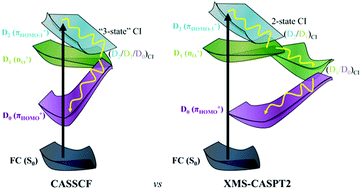
Phys. Chem. Chem. Phys., 2019,21, 14322-14330
https://doi.org/10.1039/C8CP07189F
Understanding CO oxidation on the Pt(111) surface based on a reaction route network
Kinetic analysis by the rate constant matrix contraction on the reaction route network of CO oxidation on the Pt(111) surface obtained by the artificial force induced reaction reveals the impact of entropic contributions arising from a variety of local minima and transition states.
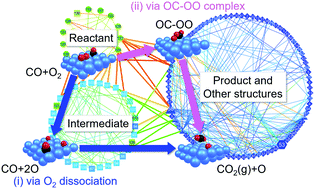
Phys. Chem. Chem. Phys., 2019,21, 14366-14375
https://doi.org/10.1039/C8CP06856A
EVB and polarizable MM study of energy relaxation in fluorine–acetonitrile reactions
Many-body effects can impact on rates of energy transfer from a ‘hot’ DF solute to acetonitrile solvent.
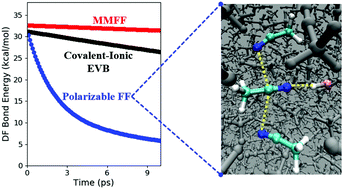
Phys. Chem. Chem. Phys., 2019,21, 14331-14340
https://doi.org/10.1039/C8CP06686H
Catalytic dissociation of tris(dimethylamino)silane on hot tungsten and tantalum filament surfaces
Tris(dimethylamino)silane catalytically dissociates on W and Ta surfaces to form ˙CH3 and H3C–N![[double bond, length as m-dash]](https://www.rsc.org/images/entities/char_e001.gif) CH2, favored at low and high temperatures, respectively.
CH2, favored at low and high temperatures, respectively.
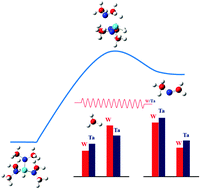
Phys. Chem. Chem. Phys., 2019,21, 14357-14365
https://doi.org/10.1039/C8CP06669H
Unraveling structural dynamics in isoenergetic excited S1 and multi-excitonic 1(TT) states of 9,10-bis(phenylethynyl)anthracene (BPEA) in solution via ultrafast Raman loss spectroscopy
Ultrafast Raman loss spectroscopy provides a direct evidence for the structural changes that occur during the evolution from the S1 to the 1(TT) state of BPEA in solution.
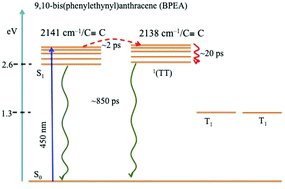
Phys. Chem. Chem. Phys., 2019,21, 14341-14349
https://doi.org/10.1039/C8CP06658B
A study of the reactions of Al+ ions with O3, N2, O2, CO2 and H2O: influence on Al+ chemistry in planetary ionospheres
First measurements of Al+ ion reaction kinetics relevant to meteor-ablated metal chemistry in planetary upper atmospheres.
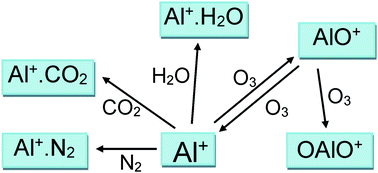
Phys. Chem. Chem. Phys., 2019,21, 14080-14089
https://doi.org/10.1039/C8CP07572G
Mapping the intrinsic absorption properties and photodegradation pathways of the protonated and deprotonated forms of the sunscreen oxybenzone
Laser photodissociation experiments on gas-phase protonated and deprotonated oxybenzone reveal how the absorption properties and photodegradation products are significantly affected by pH.
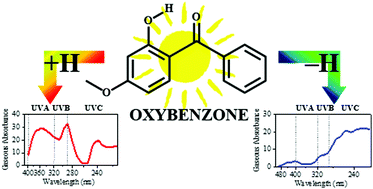
Phys. Chem. Chem. Phys., 2019,21, 14311-14321
https://doi.org/10.1039/C8CP06794E
Time-resolved imaging of bound and dissociating nuclear wave packets in strong-field ionized iodomethane
We report the results of a time-resolved coincident ion momentum imaging experiment probing nuclear wave packet dynamics in the strong-field ionization and dissociation of iodomethane (CH3I).

Phys. Chem. Chem. Phys., 2019,21, 14090-14102
https://doi.org/10.1039/C8CP07032F
Energy and orientation independence of the channel branching in Ne* + ND3 chemi-ionisation
Collisions between metastable neon and ammonia result in either dissociative or Penning ionisation. Neither process exhibits a steric effect.
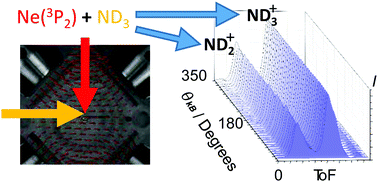
Phys. Chem. Chem. Phys., 2019,21, 14306-14310
https://doi.org/10.1039/C8CP06666C
Photoinduced electron-driven proton transfer from water to an N-heterocyclic chromophore: nonadiabatic dynamics studies for pyridine–water clusters
We performed the excited-state dynamics simulations for pyridine–water clusters and found the more water molecules involved in the cluster, the higher efficiency the water-splitting reaction has, which is qualitatively in consistent with a recent gas-phase experimental observations.

Phys. Chem. Chem. Phys., 2019,21, 14073-14079
https://doi.org/10.1039/C8CP07015F
Direct observation of product-pair correlations in rotationally inelastic collisions of ND3 with D2
Rotational product-pair correlations have been observed, while ND3 was rotationally excited, D2 was simultaneously rotationally excited and de-excited.

Phys. Chem. Chem. Phys., 2019,21, 14033-14041
https://doi.org/10.1039/C8CP07109H
Experimental and computational studies of Criegee intermediate reactions with NH3 and CH3NH2
The significance of removal of atmospheric ammonia and amines by reaction with Criegee intermediates is assessed by kinetic studies.
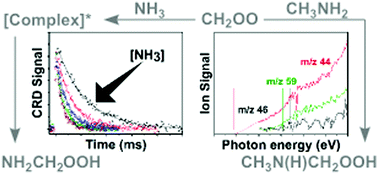
Phys. Chem. Chem. Phys., 2019,21, 14042-14052
https://doi.org/10.1039/C8CP06810K
Anharmonic excited state frequencies of para-difluorobenzene, toluene and catechol using analytic RI-CC2 second derivatives
Analytic second nuclear derivatives for excited electronic state energies have been implemented for RI-CC2, CIS(D) and ADC(2) models and used in VPT2 calculations of excited state frequencies.
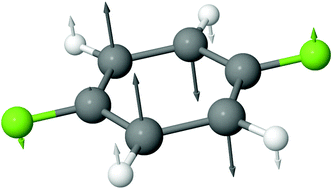
Phys. Chem. Chem. Phys., 2019,21, 14063-14072
https://doi.org/10.1039/C8CP06952B
C–I and C–F bond-breaking dynamics in the dissociative electron ionization of CF3I
We present a comprehensive experimental study into the dissociative electron ionization dynamics of CF3I at energies ranging from 20 to 100 eV.

Phys. Chem. Chem. Phys., 2019,21, 14296-14305
https://doi.org/10.1039/C8CP06682E
Photoionization and dissociative photoionization of propynal in the gas phase: theory and experiment
Propynal (HCCCHO) is a compound of considerable astrochemical interest and observed in several interstellar objects.
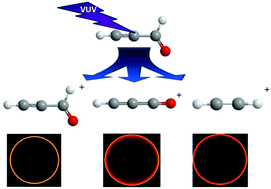
Phys. Chem. Chem. Phys., 2019,21, 14053-14062
https://doi.org/10.1039/C8CP06751A
DEA dynamics of chlorine dioxide probed by velocity slice imaging
The dissociative electron attachment dynamics of atmospherically important chlorine dioxide (OClO) is unravelled for the first time using velocity slice imaging.
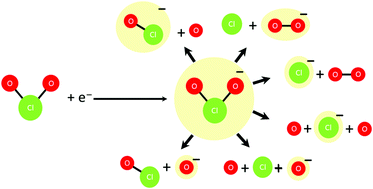
Phys. Chem. Chem. Phys., 2019,21, 14023-14032
https://doi.org/10.1039/C8CP06660D
How reactant polarization can be used to change the effect of interference on reactive collisions
Changes in the reactants' polarization have a strong effect on the shape of the differential cross sections when they are governed by interferences between two or more mechanisms.
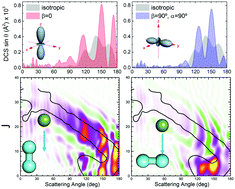
Phys. Chem. Chem. Phys., 2019,21, 14012-14022
https://doi.org/10.1039/C8CP06892E
Isotope-selective chemistry in the Be+(2S1/2) + HOD → BeOD+/BeOH+ + H/D reaction
Low temperature reactions between laser-cooled Be+(2S1/2) ions and partially deuterated water (HOD) molecules have been investigated using an ion trap and interpreted with zero-point corrected quasi-classical trajectory calculations on a highly accurate global potential energy surface for the ground electronic state.
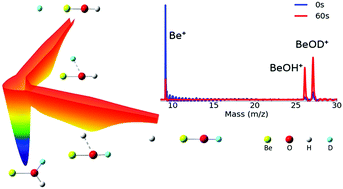
Phys. Chem. Chem. Phys., 2019,21, 14005-14011
https://doi.org/10.1039/C8CP06690F
Dynamics and quantum yields of H2 + CH2CO as a primary photolysis channel in CH3CHO
A new ketene + H2 channel in CH3CHO photolysis is not modelled by quasi-classical trajectories over the transition state.

Phys. Chem. Chem. Phys., 2019,21, 14284-14295
https://doi.org/10.1039/C8CP06412A
Photofragment spin-polarization measurements via magnetization quantum beats: dynamics of DI photodissociation
We report the electron-spin polarization of D atoms from the photodissociation of DI, at 213 nm and 266 nm, by measuring the magnetization quantum beats of the D atoms with a pick-up coil.
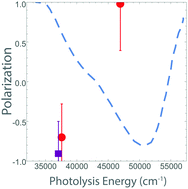
Phys. Chem. Chem. Phys., 2019,21, 14000-14004
https://doi.org/10.1039/C8CP07079B
Dynamics of benzene excimer formation from the parallel-displaced dimer
Charge transfer, exciton localization and time scales in benzene excimer formation after a S0–S1 transition from the parallel-displaced structure were characterized by surface-hopping dynamics.
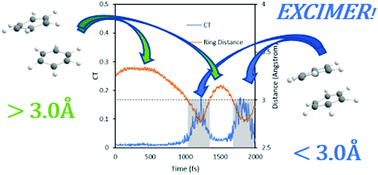
Phys. Chem. Chem. Phys., 2019,21, 13916-13924
https://doi.org/10.1039/C8CP06354K
Detection of the O2 A′3ΔU Herzberg III state by photofragment imaging
Photofragment imaging provides a sensitive method for detection of the O2 A′3Δu Herzberg III state using a one-laser dissociation/ionization scheme combined with velocity map imaging of atomic oxygen photofragments.

Phys. Chem. Chem. Phys., 2019,21, 14278-14283
https://doi.org/10.1039/C8CP06738D
Fast beam photofragment translational spectroscopy of the phenoxy radical at 225 nm, 290 nm, and 533 nm
Photodissociation experiments are used to study two- and three-body fragmentation by collecting fragments in coincidence.
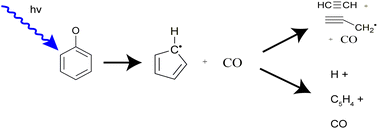
Phys. Chem. Chem. Phys., 2019,21, 14270-14277
https://doi.org/10.1039/C8CP06818F
UV photofragmentation dynamics of acetaldehyde cations prepared by single-photon VUV ionization
UV excitation of cold acetaldehyde cations prepared by single-photon VUV ionization results in remarkably rich photochemistry.

Phys. Chem. Chem. Phys., 2019,21, 14214-14225
https://doi.org/10.1039/C8CP06640J
Solvent reorganization triggers photo-induced solvated electron generation in phenol
Charge-transfer states with large electron–hole separation, correlating to the formation of solvated electrons, are found below the maximum of the absorbing ππ* band of solvated phenol.
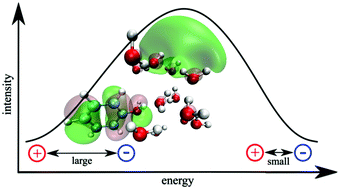
Phys. Chem. Chem. Phys., 2019,21, 14261-14269
https://doi.org/10.1039/C8CP06656F
Mechanisms of photoreactivity in hydrogen-bonded adenine–H2O complexes
The mechanisms of photoinduced reactions of adenine with water molecules in hydrogen-bonded adenine–water complexes were investigated with ab initio wave-function-based electronic-structure calculations.
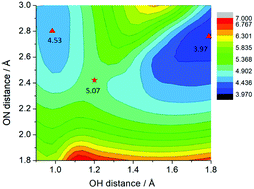
Phys. Chem. Chem. Phys., 2019,21, 14238-14249
https://doi.org/10.1039/C8CP05305G
Dynamics of the photodissociation of ethyl iodide from the origin of the B band. A slice imaging study
The electronic predissociation dynamics and stereodynamics of ethyl iodide from the origin of the B-band are studied by slice imaging and ab initio calculations.
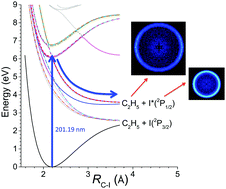
Phys. Chem. Chem. Phys., 2019,21, 14250-14260
https://doi.org/10.1039/C8CP06482B
Photoelectron spectroscopic study of I−·ICF3: a frontside attack SN2 pre-reaction complex
The I−·ICF3 complex, a frontside attack pre-reaction complex of a classic SN2 reaction, is produced and studied using photoelectron spectroscopy.
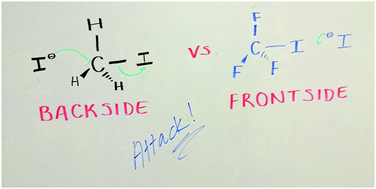
Phys. Chem. Chem. Phys., 2019,21, 13977-13985
https://doi.org/10.1039/C8CP06593D
Automatic and semi-automatic assignment and fitting of spectra with PGOPHER
Nearest lines plot, making assignment of dense and complex spectra easy.
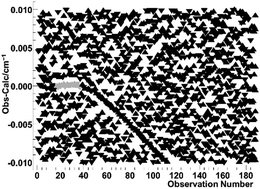
Phys. Chem. Chem. Phys., 2019,21, 13986-13999
https://doi.org/10.1039/C8CP06493H
Correspondence between electronic structure calculations and simulations: nonadiabatic dynamics in CS2
The choice of ab initio electronic structure method is an important factor in determining the fidelity of nonadiabatic dynamics simulations.
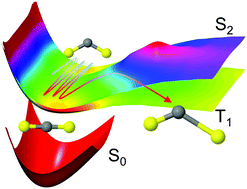
Phys. Chem. Chem. Phys., 2019,21, 14226-14237
https://doi.org/10.1039/C8CP05693E
Vibrational predissociation of the phenol–water dimer: a view from the water
Predissociation dynamics of the phenol–water dimer were studied by detecting H2O fragments and using VMI to infer internal state distributions.
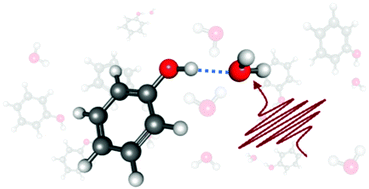
Phys. Chem. Chem. Phys., 2019,21, 13968-13976
https://doi.org/10.1039/C8CP06581K
Photon catalysis of deuterium iodide photodissociation
The photodissociation of deuterium iodide is catalyzed by the electric field supplied by nonresonant IR photons.
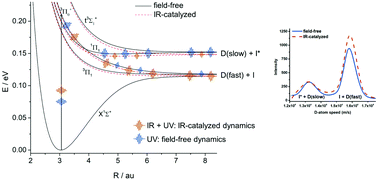
Phys. Chem. Chem. Phys., 2019,21, 14195-14204
https://doi.org/10.1039/C8CP06107F
Proton transfer from pinene stabilizes water clusters
Molecular beams experiments and ab initio theory reveal indirect formation of protonated water clusters by ionization of pinene.
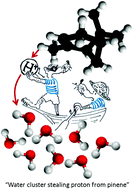
Phys. Chem. Chem. Phys., 2019,21, 13925-13933
https://doi.org/10.1039/C8CP05959D
Representation of coupled adiabatic potential energy surfaces using neural network based quasi-diabatic Hamiltonians: 1,2 2A′ states of LiFH
A general algorithm for determining diabatic representations from adiabatic energies, energy gradients and derivative couplings using neural networks is introduced.
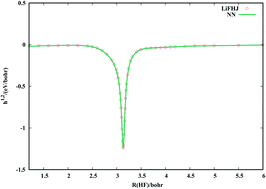
Phys. Chem. Chem. Phys., 2019,21, 14205-14213
https://doi.org/10.1039/C8CP06598E
Imaging H abstraction dynamics in crossed molecular beams: O(3P) + propanol isomers
Direct rebound dynamics are revealed for bimolecular reaction of the ground state O(3P) atom with propanol isomers, involving the post transition state long-range dipole–dipole interaction between the dipolar OH and hydroxypropyl radicals.
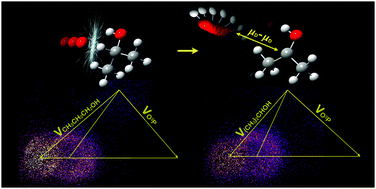
Phys. Chem. Chem. Phys., 2019,21, 14186-14194
https://doi.org/10.1039/C8CP06351F
Structural isomers and low-lying electronic states of gas-phase M+(N2O)n (M = Co, Rh, Ir) ion–molecule complexes
The structures of gas-phase group nine cation–nitrous oxide metal–ligand complexes, M+(N2O)n (M = Co, Rh, Ir; n = 2–7) have been determined by a combination of infrared photodissociation spectroscopy and density functional theory.
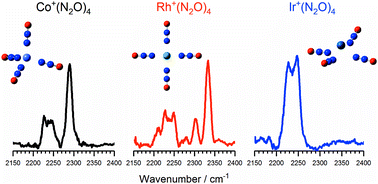
Phys. Chem. Chem. Phys., 2019,21, 13959-13967
https://doi.org/10.1039/C8CP05995K
Differential steric effects in the inelastic scattering of NO(X) + Ar: spin–orbit changing transitions
The differential steric effect for spin–orbit changing collisions of NO with Ar is determined for the first time.
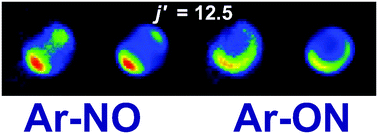
Phys. Chem. Chem. Phys., 2019,21, 14173-14185
https://doi.org/10.1039/C8CP06225K
Dimers of acetic acid in helium nanodroplets
Two metastable dimers are created inside superfluid helium and studied using infrared spectroscopy to provide insight into condensed phase structures.

Phys. Chem. Chem. Phys., 2019,21, 13950-13958
https://doi.org/10.1039/C8CP05934A
Two-dimensional electronic-vibrational spectroscopic study of conical intersection dynamics: an experimental and electronic structure study
The relaxation from the lowest singlet excited state of the triphenylmethane dyes, crystal violet and malachite green, is studied via two-dimensional electronic-vibrational (2DEV) spectroscopy.
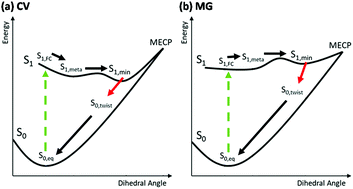
Phys. Chem. Chem. Phys., 2019,21, 14153-14163
https://doi.org/10.1039/C8CP05264F
Vectorial imaging of the photodissociation of 2-bromobutane oriented via hexapolar state selection
Molecular orientation techniques are becoming available in the study of elementary chemical processes, in order to highlight those structural and dynamical properties that would be concealed by random rotational motions.
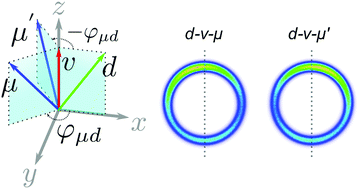
Phys. Chem. Chem. Phys., 2019,21, 14164-14172
https://doi.org/10.1039/C8CP04270E
Finite-temperature Wigner phase-space sampling and temperature effects on the excited-state dynamics of 2-nitronaphthalene
The concept of finite temperature Wigner phase-space sampling allowing the population of vibrationally excited states is introduced and employed to study temperature effects on the absorption spectrum of 2-nitronaphtalene (2NN) and its relaxation dynamics.

Phys. Chem. Chem. Phys., 2019,21, 13906-13915
https://doi.org/10.1039/C8CP03273D
Photodissociation of CH2BrI using cavity ring-down spectroscopy: in search of a BrI elimination channel
Photodissociation of CH2BrI was investigated in search of unimolecular elimination of BrI via a primary channel using cavity ring-down absorption spectroscopy (CRDS) at 248 nm.
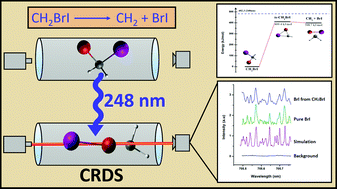
Phys. Chem. Chem. Phys., 2019,21, 13943-13949
https://doi.org/10.1039/C8CP04130J
Imaging pair-correlated reaction cross sections in F + CH3D(νb = 0, 1) → CH2D(ν4 = 1) + HF(ν)
Product pair-correlated distributions in the title reactions are revealed by imaging the state-tagged CH2D(ν4 = 1) products.
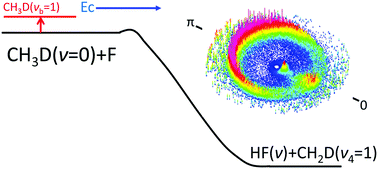
Phys. Chem. Chem. Phys., 2019,21, 13934-13942
https://doi.org/10.1039/C8CP03443E
Effects of symmetry, methyl groups and serendipity on intramolecular vibrational energy dispersal
Intramolecular vibrational dispersal of vibrational energy is more efficient in the symmetrically-substituted p-xylene molecule than in p-fluorotoluene, p-chlorofluorobenzene or p-difluorobenzene.
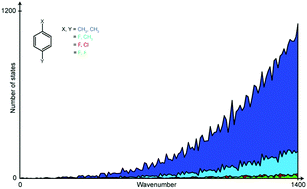
Phys. Chem. Chem. Phys., 2019,21, 14133-14152
https://doi.org/10.1039/C8CP02757A
On the formation and the isomer specific detection of methylacetylene (CH3CCH), propene (CH3CHCH2), cyclopropane (c-C3H6), vinylacetylene (CH2CHCCH), and 1,3-butadiene (CH2CHCHCH2) from interstellar methane ice analogues
The isomer specific detection of complex hydrocarbons from irradiated methane ice plus their yields and formation routes have been elucidated.
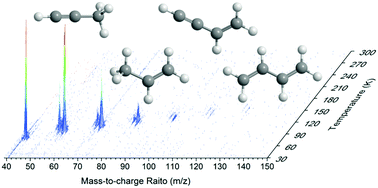
Phys. Chem. Chem. Phys., 2019,21, 5378-5393
https://doi.org/10.1039/C8CP03921F
About this collection
Guest-edited by Andrew Orr-Ewing (University of Bristol), this themed issue highlights the latest research in the fundamental mechanisms of photochemical and chemical reactions in the gas and liquid phases, featuring both experimental and theoretical studies.